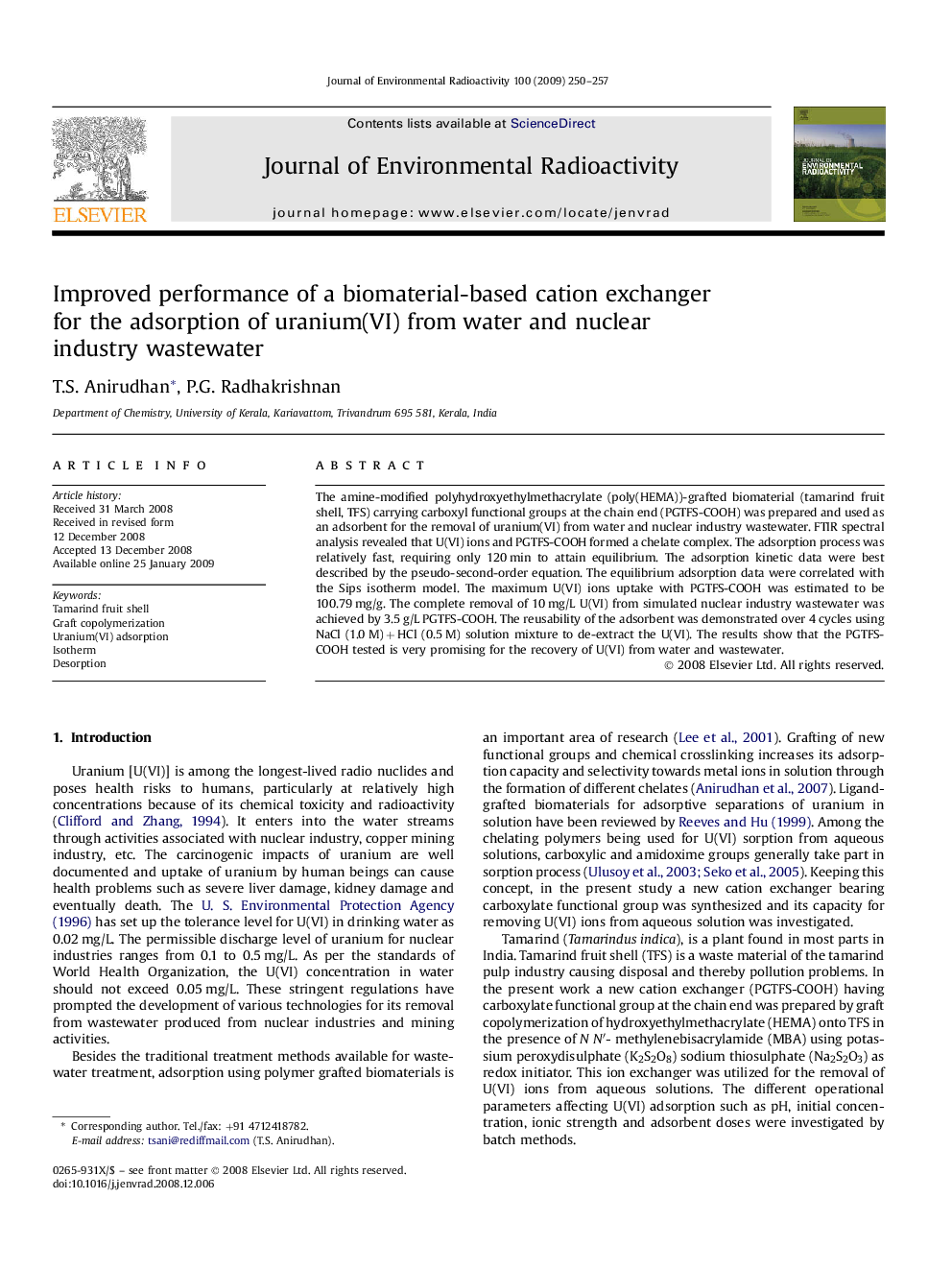| Article ID | Journal | Published Year | Pages | File Type |
|---|---|---|---|---|
| 1739001 | Journal of Environmental Radioactivity | 2009 | 8 Pages |
The amine-modified polyhydroxyethylmethacrylate (poly(HEMA))-grafted biomaterial (tamarind fruit shell, TFS) carrying carboxyl functional groups at the chain end (PGTFS-COOH) was prepared and used as an adsorbent for the removal of uranium(VI) from water and nuclear industry wastewater. FTIR spectral analysis revealed that U(VI) ions and PGTFS-COOH formed a chelate complex. The adsorption process was relatively fast, requiring only 120 min to attain equilibrium. The adsorption kinetic data were best described by the pseudo-second-order equation. The equilibrium adsorption data were correlated with the Sips isotherm model. The maximum U(VI) ions uptake with PGTFS-COOH was estimated to be 100.79 mg/g. The complete removal of 10 mg/L U(VI) from simulated nuclear industry wastewater was achieved by 3.5 g/L PGTFS-COOH. The reusability of the adsorbent was demonstrated over 4 cycles using NaCl (1.0 M) + HCl (0.5 M) solution mixture to de-extract the U(VI). The results show that the PGTFS-COOH tested is very promising for the recovery of U(VI) from water and wastewater.
